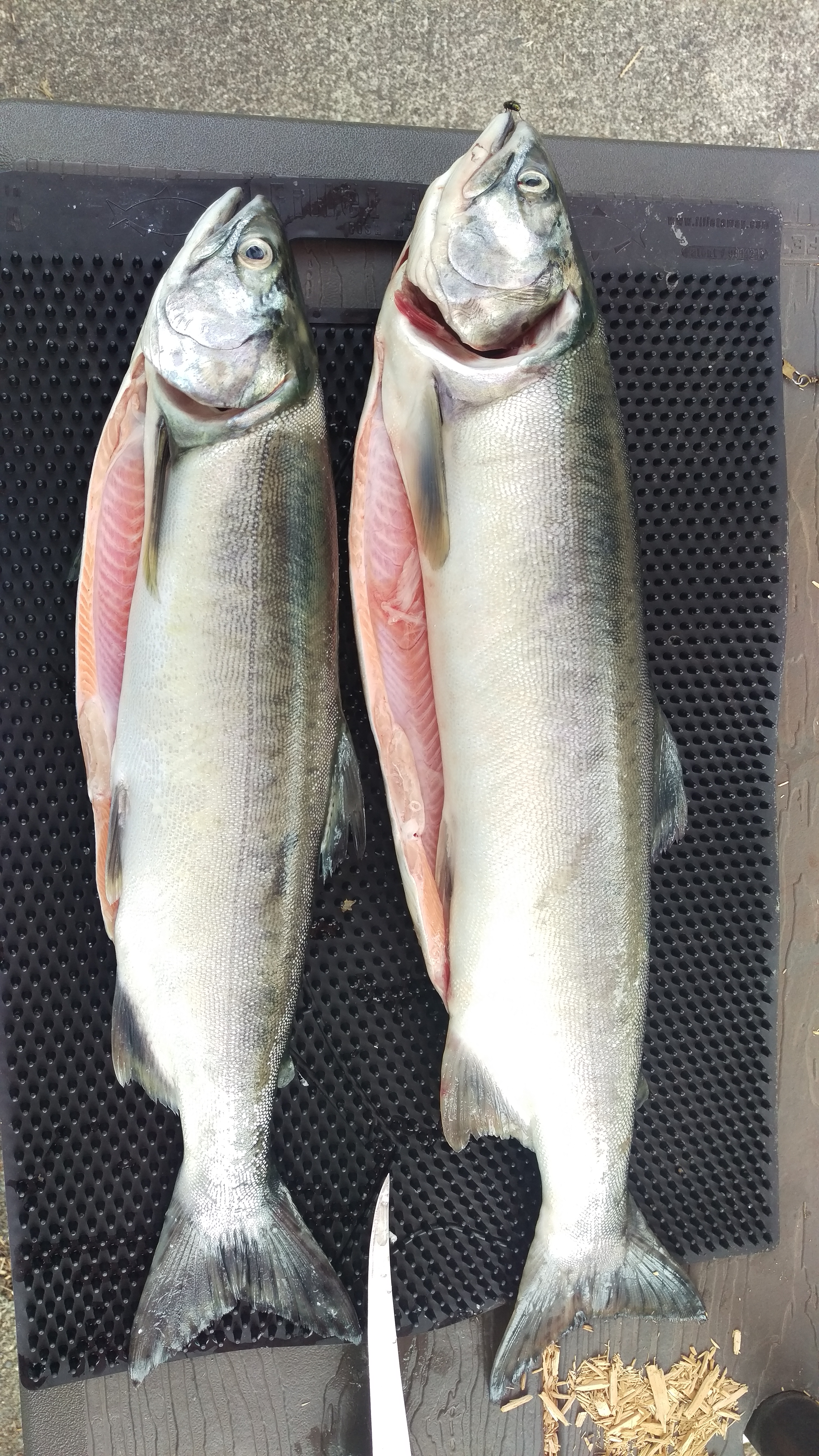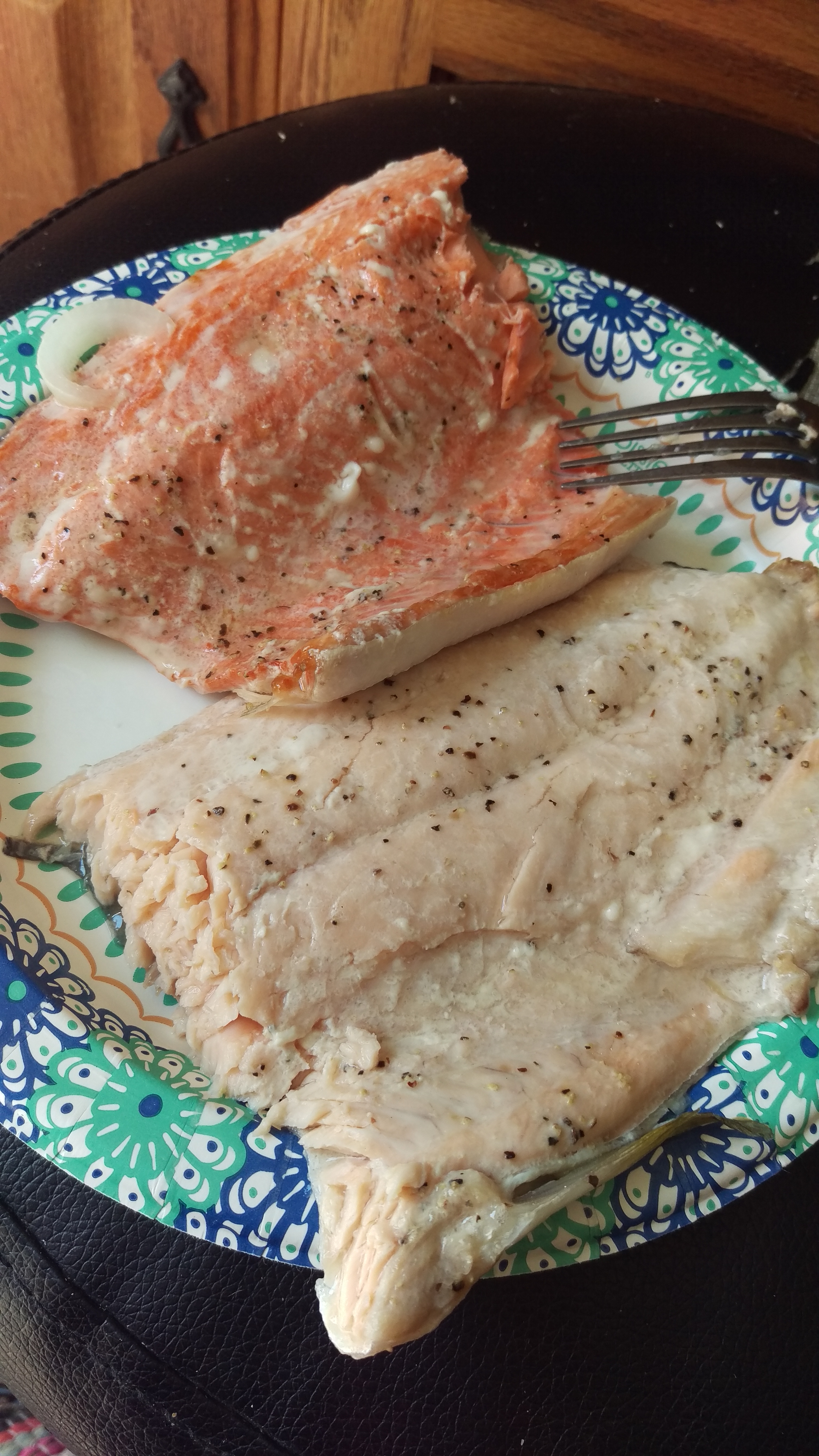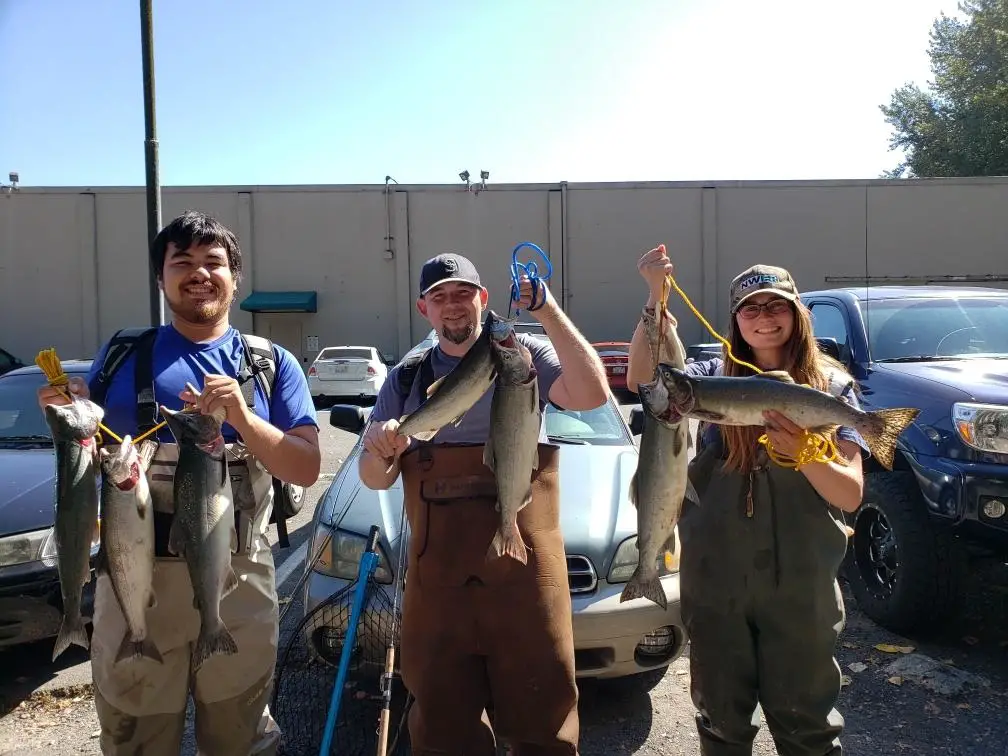Search
Latest Articles
Slaying Kings on the Carbon
by Hannah Pennebaker , September 02, 2019
The Three Techniques
Similarly to its nearby cousin, the Puyallup, corkies and yarn are the go-to technique on the Carbon. For pink salmon, tie on a small, bright pink corky and thread a 2 inch long strand of pink yarn through your egg loop knot. Use 1/4 oz to 1/2oz of lead, but avoid pencil lead or you will inevitably snag. I recommend slinky weights or cannon balls as an alternative. Find an area with good drift, cast upriver 45 degrees, tighten up your slack, and drift down, following your corky with your rod. For the big boys, try a green or black corky and black yarn. You can add a drop of scent to your yarn as well, to tempt additional bites. Don't be afraid to change up your colors and scent; kings can be moody.
If the fish aren't biting your corky, try throwing out some salmon eggs instead! Kings will see the eggs, and eat them to reduce competition for their own offspring. I usually fish the Puyallup earlier in the season and keep female pink salmon (hens), throw the meat in the smoker, and brine up the eggs for bait. Pautzke Fire Cure is a reliable product. Some people use borax, others make up their own brine and scent. Simply gut your fish, dry the eggs in paper towels or newspaper for 30 minutes, and sprinkle on your chosen cure on both sides of your egg skeins. I vacuum seal and freeze my eggs if I won't use them in a week. When fishing, use a dime size to golfball size glob of eggs, depending on what the fish want that day. You can also experiment with different egg scents and colors; it's good to have a variety! Use a 3/8oz bobber, split shot, 4-8 foot leader, and a 2/0 hook. You want just enough leader to be barely off the bottom, where the big kings hang out. Just like you're drifting a corky and yarn, cast 45 degrees upstream and drift until that bobber goes down. If you're in a "combat fishing" situation, shoulder to shoulder, it's common practice to sequence cast to avoid tangles. Each fisherman lets the person to his or her left cast first.
The third technique for fishing the Carbon is casting spoons. I've heard of good results with Dick Nite Spoons. Blue Fox Vibrax Spinners are another favorite. Green and orange seem to work well for kings. Again, don't be afraid to work different colors to see what the fish like that day.
The Holes
Wondering where to go to get started on the Carbon? There are numerous access points from the mouth down into Orting. Try parking behind the waste treatment plant. There is a trail running alongside the Carbon, and if one spot is too packed, feel free to walk down to another. I've seen bicyclists on the path, carrying their salmon on their handle bars, smart move! Keep an eye out for spots behind and after the rapids. Kings will rest up there before getting on the move again. Another thing to keep an eye out for are overhanging trees and deep pockets on the other side of the river. Reading the river is an essential skill, particularly if you want to get away from the crowds. I've often fished shoulder to shoulder, and then moved down on the trail a short ways and then hooked up. The end of River Street in Orting is another place with good access. On the way to your spot, don't forget to stop by Big J's for a derby ticket. $5 gets you a chance at a prize for biggest pink and/or king. Whether you choose to float eggs, cast a jig, or drift a corky, good luck, and slay those kings!
Hannah Pennebaker graduated from Pacific Lutheran University with a degree in Environmental Studies. She enjoys both freshwater and saltwater fishing adventures in the Puget Sound area with her fishing group, the Straw Hat Fishermen.


